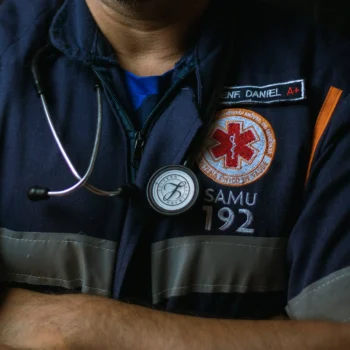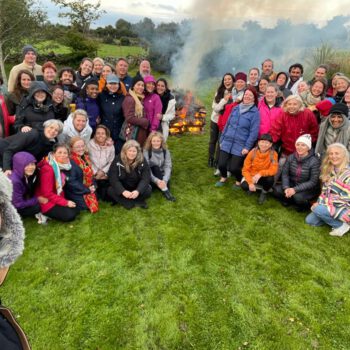By Lizzie Reumont
‘When the Body Says No’ is a CI Focus Group that explores the nature of disease in relation to mental/emotional health; the path to healing, and what the word, ‘healing’ means in the context of Compassionate Inquiry.
When chronic illness is present and the body says ‘No’ loudly enough, there is often a desperation to fix the problem. That initial panic can lead people to seek medical care, and as a result, many patients receive a diagnosis and a course of action, including prescriptions and long-term medication. Of course, there are times when the pursuit of answers to an ailing body amounts to no diagnosis; the person is left hanging in a liminal state of living unwell, which can mean there is little respite from either the panic or the pain of their current condition.
Navigating any form of illness and/or pain, with or without a label, brings up varied and often complex emotions and belief patterns. This is why, after almost two years facilitating a group called CI and Autoimmune Disease, Chronic Pain, and Cancer, the group decided to change the name to a more inclusive title. This title now includes anyone with a body saying no, as well as CI participants and practitioners who may be friends, family members or therapists working to support the chronically ill.
Some of us in the group have been referred to as ‘disabled,’ ‘handicapped,’ and/or ‘invisibly ill,’ and while some of us would not personally identify with these labels, most of us do identify with a belief system that includes phrases like “I’m different.” “I don’t fit in.” “I am not deserving.” “I’m a burden.”“I’m broken.” “I’m worthless.”

Reinforcement of any one of these beliefs is subconsciously sought in any given situation, including in the context of a CI session, which often starts with a grounding. The purpose of a grounding is to invite a client into the container of their body to observe what is present. While this generally happens in a small window of time, it is a small but safety-defining moment that may hold a particular weight for this group of people. It’s important to recognise that they might feel discomfort, pain, or a sense that their bodies have been annihilated through illness, medication or surgery, and it is no surprise that many such people have disassociated from the somatic space altogether.
Language around the grounding can be hit-or-miss for a group who may be wholly uncomfortable in their bodies. They might be unable to connect into the obvious physical place in the way that able-bodied people may take for granted. Take, for example, the client with MS, who may not have sensations in their feet; asking them to feel their feet on the floor will surely resonate differently for them than an ‘able-bodied’ person. Likewise, asking a woman who has had a mastectomy to feel herself breathing into her chest may evoke pain, sadness, anger or even shame. Someone with a digestive illness may not be able to let their belly relax in the midst of a flair. There are endless examples of how a seemingly benign invitation into the body may be a trigger for a subset of people. Of course, one size never fits all when it comes to therapy, and the point is not to tap-dance around unknown triggers. Rather, the point is just to maintain an awareness of the reality that somatic-based therapy is a wholly different experience for one living with chronic pain or illness, than for someone who isn’t.
Here are a few guidelines we discussed in the context of our focus group, aimed at helping to ensure that a Compassionate Inquiry grounding is an inclusive experience creating safety and inviting the client to move into their physicality at their own pace.
- Be non-directive: avoid bringing the client’s awareness somewhere specific in their body. You might say, “Notice what connects you with whatever your body is touching,” instead of, “Feel your feet on the floor,” – they may not have access to the area in question, the area may be imbued with meaning or emotion.
- Be clear about the intention for the grounding: “This is a one-minute grounding exercise intended to bring you into the present-moment experience of yourself; this is not about fixing or changing, but rather, being with what is.”
- Saying less is more: “Is it ok for you to take a few seconds to observe your body breathing? Can you ride the breath into your body? Please take all the time you need. I’ll know you are ready to continue when you open your eyes.”
- Give them permission to move: “If at any time you need to move, shift or change positions, please listen to your body’s needs and adapt in your own way.”
If you have questions, comments or suggestions relating to working with chronic illness, you are welcome to get in touch with Lizzie at lizzie@freeliz.com.



